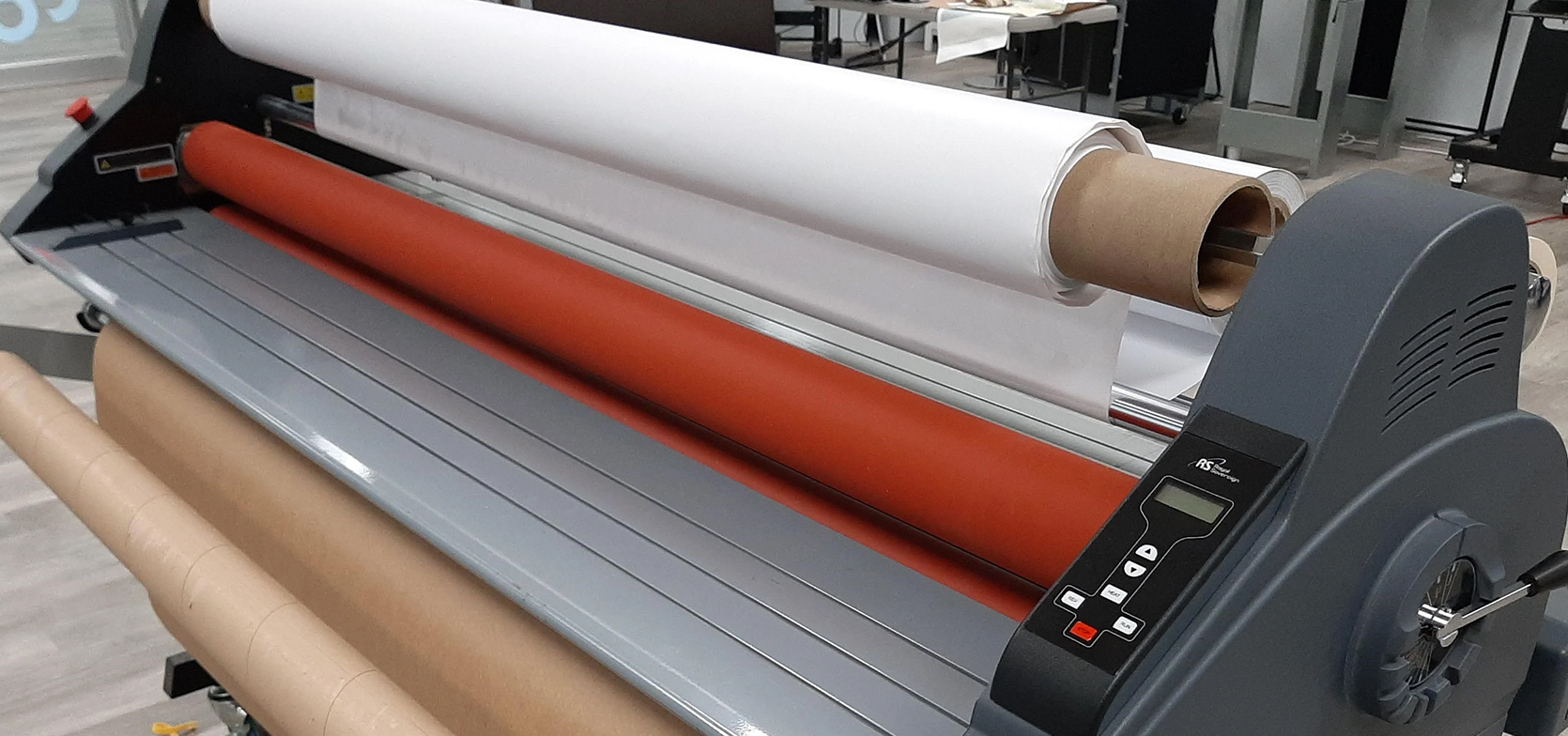Know Your Laminator
When it comes to the sign creation process, many surprisingly forget that a reliable, high-quality Laminator is what can take your business from good to great. Investing so much in the newest printer, inks, media, etc. has to be paired with the right equipment to finish the process.
Laminating is a professional way to provide wide format graphics that finishing touch, such as banners, signs, POP displays, vehicle graphics, and many more. To choose the right laminator for your needs, you should understand the anatomy and process of the equipment. Let's break it down!Build
- Table Top: This build is usually an economical solution for low volume production, 24-inch, 'pseudo' wide format laminating. Not recommended for actual wide format laminating and mounting.
- Legs: The laminating unit is one piece but the legs are separate attachments that are usually installed onsite similar to printers. This is the most common solutions these days.
- Frame: Typically, the bigger and more industrial units are comprised of an all-in-one frame from the side of the laminator to legs. This requires no on-site assembly, and built to be reliable for extended periods of time.
Rollers
- Diameter: The greater diameter of the rollers will usually produce better quality results. The advantage of wider rollers comes from the laminate feeding through at a flatter angle, creating great surface contact. Top end units have 6-inch or more rollers.
- Crowned: Virtually all the laminators on the market have crowned rollers - meaning the middle of the roller is thicker than on the edges. This crowned effect spreads the pressure of the roller through the middle. Over time, this crown is worn away which can cause issues with pressure spread. Most use crowned rollers as a less expensive way to laminate. Top end units have straight rollers which need to be installed and aligned correctly to work effectively.
Roller Surface
- Rubber: This is a cost-effective roller surface, but attracts/retains dirt more than others.
- Synthetic Silicon: A step above rubber, middle of the road quality for a roller surface.
- Silicon: There are different density variations of silicon that can be used. Softer silicon is easier to use but doesn't hold up as well, and is more easily damaged by hard boards like ACM. Silicon is measured in Durameters, where 50 is standard and 90 is on the hard side.
Pressure
The pressure of a laminator is key and used in two places; top roller down onto bottom roller, and rewinds and unwinds.
- Spring: This pressure is the most commonly chosen, but springs weaken and wear out over time. This is an affordable option but comes with inconsistencies regarding reliability, spring creation, evenness, etc.
- Pneumatic: Pressure is constant and consistent. Typically, found on the heavier duty units like Frame units. The amount of PSI varies per manufacturer and needs to be clean and dry air.
- Brake: Pressure sets the amount of tension on the unwind or rewind rolls.
Heat
- Cold: Laminator rollers are room temperature. For vinyl lamination, use this option.
- Heat Assist: This allows you to apply heat to the top roller, which softens up the adhesive before it is applied. This process will help reduce, if not eliminate, silvering (little specs you see in the laminate that should disappear over time but a real issue on quick turnaround jobs). Note what the max temp of the roller is. Attempt to avoid the temperature ceiling and running your machine at its max.
For the laminator process, you need to choose the right options that suit your business needs. Determining which build, rollers, surface, pressure, and heat you need can directly affect the outcome of your products.
Grimco provides a wide array of laminator options to best suite you! We carry brands from GFP, Rollsroller, Royal Sovereign, and Seal. See all your options on the webstore!



